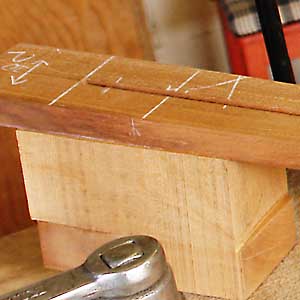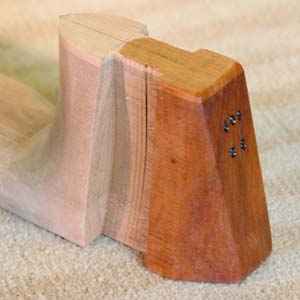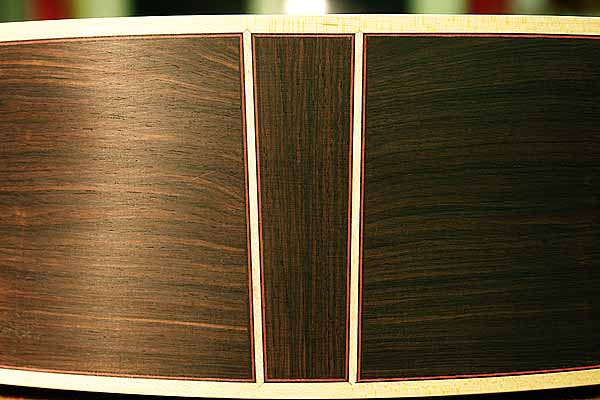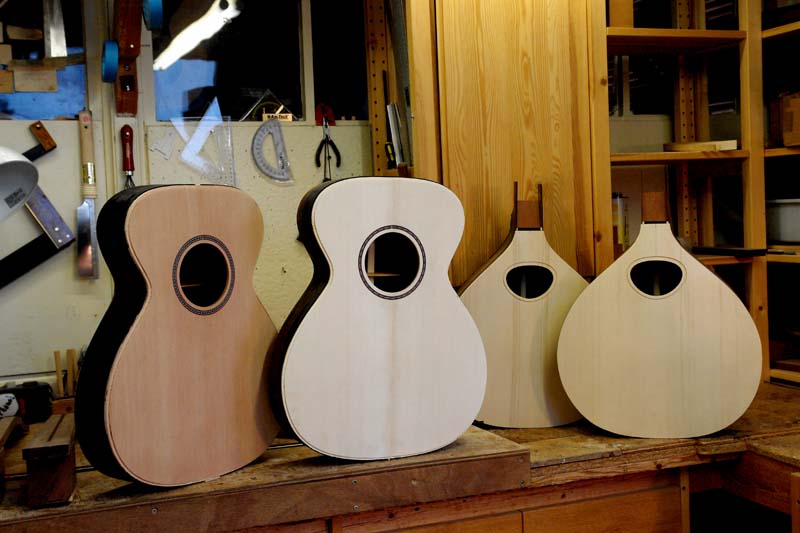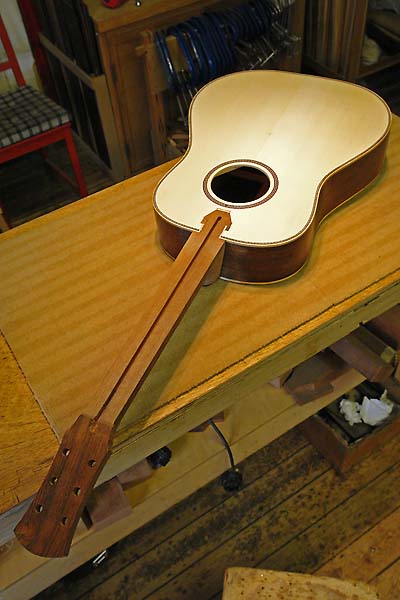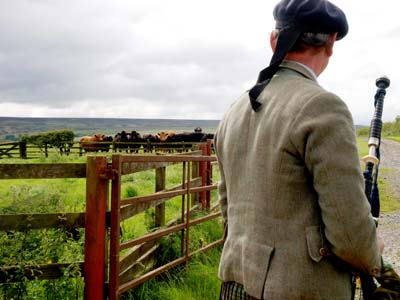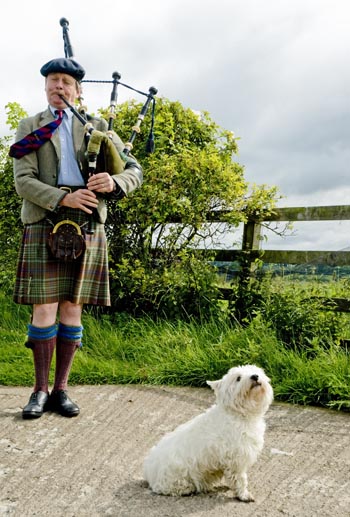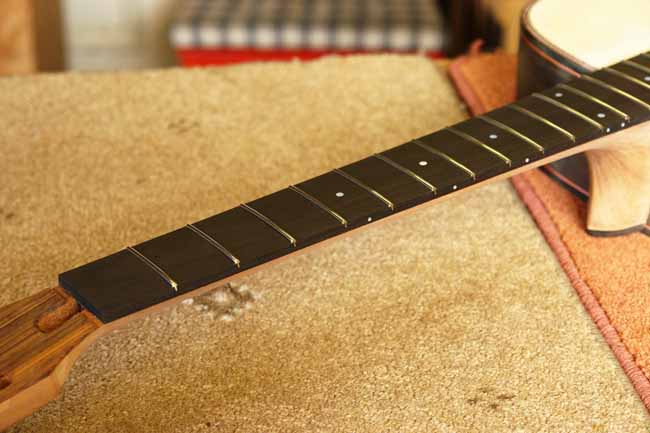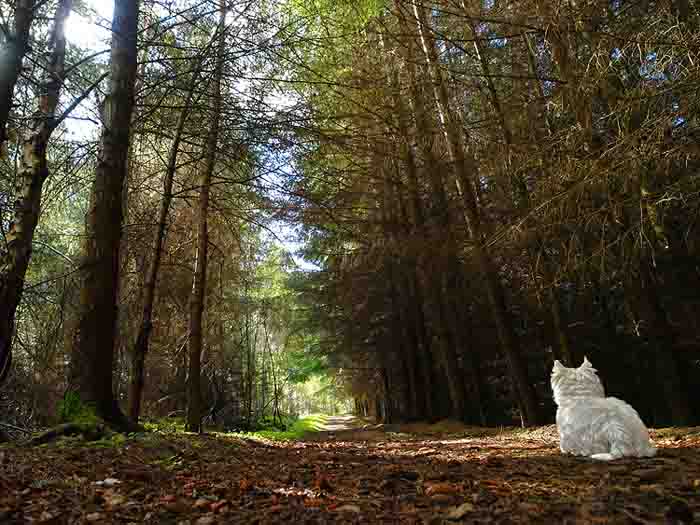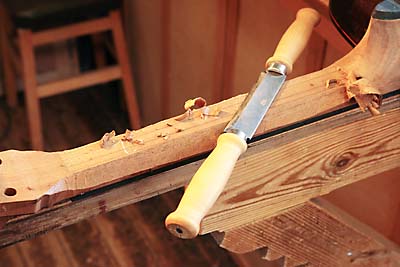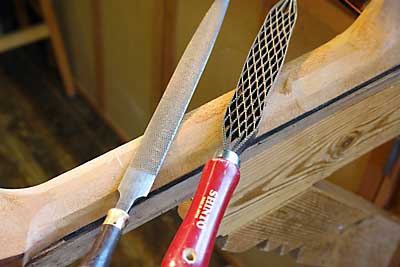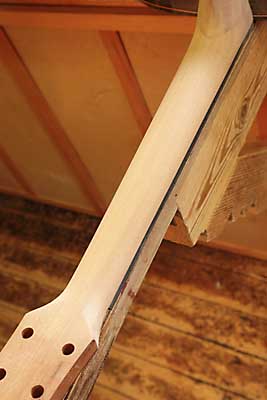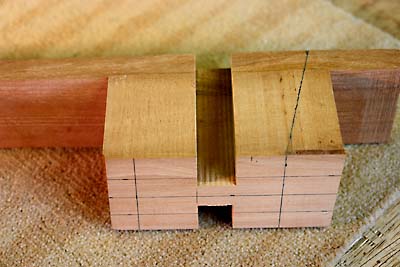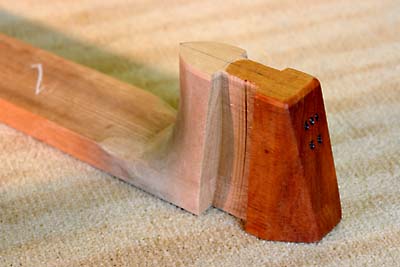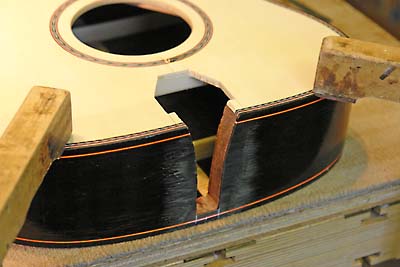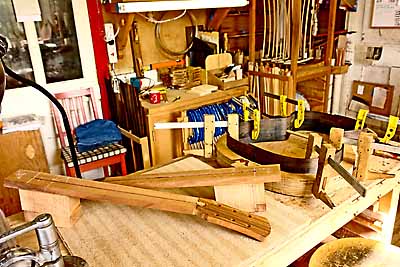Here I’ve fitted the neck to the body, having driven in the main wedges and added more small wedges between neck extension and soundboard.
Below the neck is ready for its fingerboard, with clear tape protecting the truss-rod from glue and a dummy nut in place to locate the fingerboard lengthways.
Below right the fingerboard is glued in place. I use so many clamps not to clamp it tight but to spread pressure over the full area of the fingerboard.
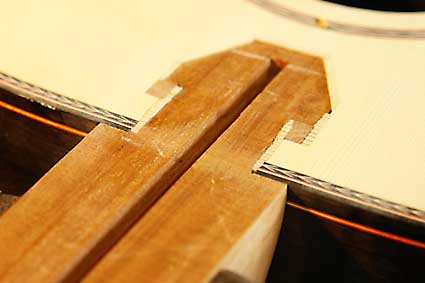
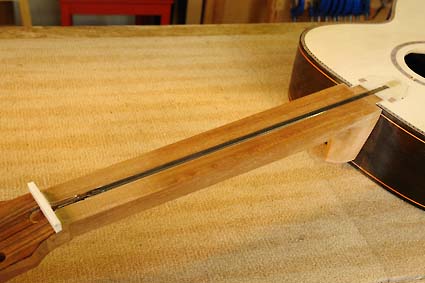
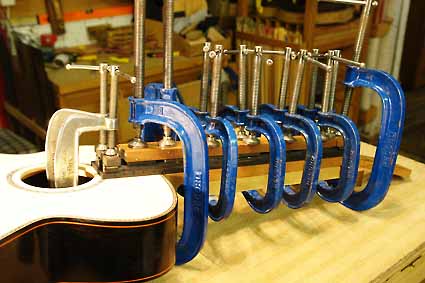
A visitor this morning looked at the fingerboard glued to the neck and also the rough block glued to the other neck He commented how ‘brutal’ it looked, meaning compared with the finished guitar.
I see what he means. If you’re not used to seeing partly made guitars, the contrast with the finished instrument is striking. But in fact, the rough stage is an essential part of getting to the finished instrument. For example, the two pictures here show the rough heel block attached to the neck, and then the same piece just a few hours later.
